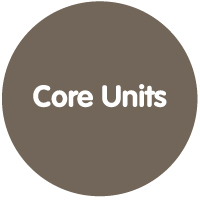 | | Protein biogenesis, folding and structureCoordinator
Cláudio M. Soares and Pedro Matias Objectives
This curricular unit aims at giving a general overview of proteins, from their biogenesis and folding, their structural characteristics and stability, to their targeting in the living cell. This journey, from the fundamental constituents of proteins to protein function, will refresh the students’ knowledge and will provide a modern view of these building
blocks of life. The knowledge and skills acquired in this curricular unit will allow the students to have a general understanding of the scientific literature in the area, and to be able to (individually) deepen their knowledge in selected areas. Syllabus
1) Short overview of the different levels of protein structure.
2) Protein representation and structural understanding. Protein databases. Computer visualisation of molecules. The diversity of the protein universe (globular, multidomain and intrinsically disorded proteins).
3) Protein biogenesis in the ribosome. Protein targeting and protein sorting. Molecular Chaperones. Post-translation modifications. Protein degradation.
4) Principles of Protein folding and stability. Physical and energetic determinants. Protein folding kinetics (folding funnels). Protein dynamics. Protein misfolding (kinetic traps). The amyloid state. Protein stability.
5) Protein homology and evolution. Protein structure prediction. Evaluation
Evaluation will consider three components:
1) Continuous evaluation during tutorials and problem solving sessions.
2) Individual written essays.
3) Individual or group presentations. Bibliography - Branden, C., and Tooze, J. 1999. Introduction to protein structure., Garland Science.
- Creighton, T. E. 1992. Proteins: Structures and Molecular Properties., W. H. Freeman
- Lesk, A.M. 2010. Introduction to Protein Science: Architecture, Function, and Genomics., Oxford University Press
- Whitford, D. 2005. Proteins: Structure and Function., Wiley
back to core units |

